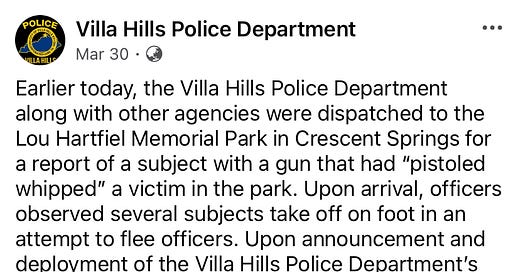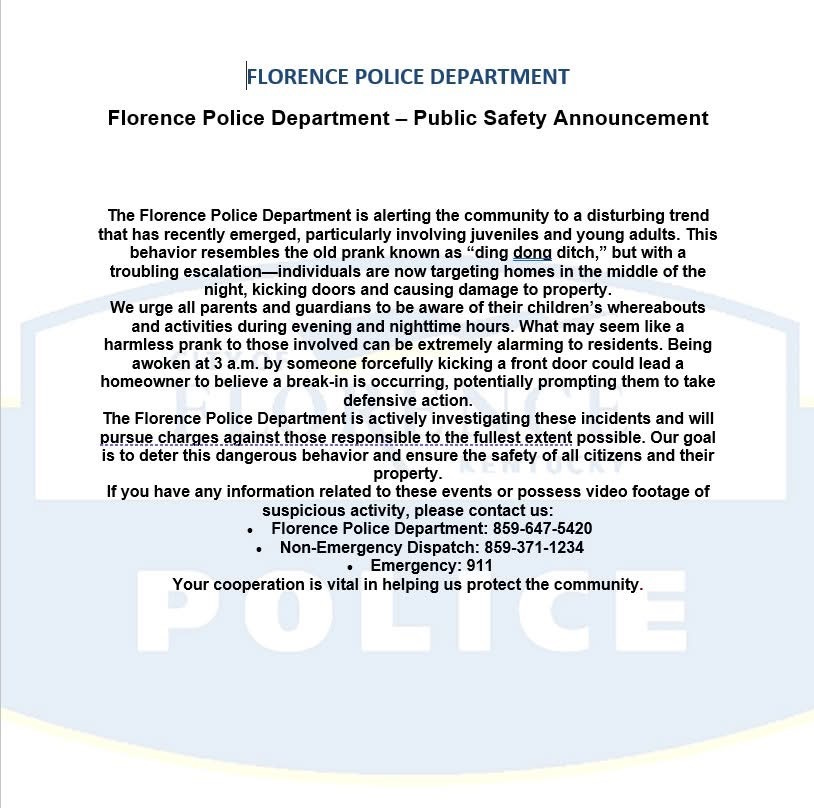What Are Northern Kentucky's Youth Communicating to Us With Their Behavior?
How state failure, social fragmentation, and authoritarian drift are driving a generation to despair in suburban Kentucky.
Systemic corruption does not always reveal itself through overt acts of criminal misconduct. Often, its fingerprints are most visible in the consequences: economic stagnation, lack of innovation, capital flight, brain drain, and the breakdown of youth identity and cohesion. These are not isolated social challenges—they are the logical outgrowth of deeper structural decay.
In this piece, I want to briefly explore two phenomena we are currently witnessing: the rising tide of youth suicides and the apparent increase in juvenile delinquency. Both are thoroughly documented in the sociological tradition, and both were predicted in my political manifesto, which appears in the first post of this Substack.
That document, equal parts historical analysis, investigative reporting, and reform proposal, serves as a working diagnostic. I developed a theoretical model of local regime dysfunction, grounded in lived experience, forensic research, and tested now against the observable news cycle. What began as theory is now affirmed in fact.
I. Youth Suicide and Social Disintegration
Many young people today are in crisis. As recent media coverage has shown, we are seeing an alarming rise in suicide and self-harm. These are not isolated tragedies; they are symptoms of a broader sociopolitical condition. As Emile Durkheim noted more than a century ago:
“Suicide varies inversely with the degree of integration of religious society. Suicide varies inversely with the degree of integration of domestic society. Suicide varies inversely with the degree of integration of political society.”
Durkheim's observation underscores a fundamental sociological truth: the more fragmented a society becomes, the more its individuals suffer. When religious, familial, and political bonds fray, people become isolated. And with isolation comes despair.
On February 25, Boone County created a Suicide Response Team following five teen suicides in less than four months. Local media noted that the task force would focus on “engagement, support, and postvention,” a form of response designed to prevent further suicides after a loss.
Boone County Judge-Executive Gary Moore issued a predictable statement:
“Even one death is too many, and the death of five young people in our community is a call to action. We must come together to support our youth, their families, and others across our area. This response team is just a first step in ensuring our community has the support and resources it needs.”
While the sentiment is appropriate, the statement lacks any sociological depth. As Durkheim warned, suicides “reflect the relaxation of social bonds, a sort of collective asthenia, or social malaise, just as individual sadness, when chronic, in its way reflects the poor organic state of the individual.”
These suicides are not random. They reflect something broken at the root of society. Northern Kentucky has long been at the heart of the opioid crisis. As I documented in a 2016 column (drawing on an event I attended in 2015), public leaders openly debated whether to let addicts die. This is not hyperbole. One community figure asked former President Barack Obama’s drug czar, Michael Botticelli, if perhaps addicts should simply be allowed to die. That is a fascist impulse—the authoritarian desire to rid society of its weakest members. It is not a mentality that fosters hope, healing, or rebirth.
Durkheim observed a relationship between suicide and homicide—two expressions of the same nascent violence. When turned inward, that violence manifests as suicide. When turned outward, as murder or rebellion. Both grow in the vacuum left by failing institutions.
II. Youth Crime and the Cry for Authority
Delinquency, too, tells a story. The child psychologist Donald Winnicott wrote:
“Delinquency indicates that some hope remains. You will see that it is not necessarily an illness of the child when he behaves anti-socially, and anti-social behaviour is at times no more than an SOS for control by strong, loving, confident people.”
We are seeing such SOS signals now. But our institutions—instead of answering with strength, love, and confidence—respond with punitive aggression disguised as authority.
On March 30, the Villa Hills Police Department posted the following:
Let us be clear: the Villa Hills Police Department is under scrutiny in my ongoing investigation for its alleged role in protecting criminal networks. They are not a neutral party. And in this case, they mobilized with dramatic force against children and issued a triumphant public post. Community members responded with vindictive cruelty:
“Make an example of these punks! Lucky there weren’t shot by the police. Back the Blue!”
“They'll receive a slap on the wrist and that's it.”
“Get rid of the section 8 apartments off of Anderson Rd.”
The responses reveal a society that has internalized the carceral mindset. This is not law and order. This is moral decay disguised as justice.
On June 2, Florence Police issued a statement warning about a “disturbing trend” involving youth break-ins and vandalism. They wisely disabled comments. The implication is clear: the public can no longer be trusted to discuss these matters constructively.
Conclusion: The Need for Radical Accountability
What we are witnessing is the collapse of integration. This is not a cultural blip. It is a structural unraveling. As bonds dissolve, violence—inward and outward—rises. Youth suicide and delinquency are two faces of the same crisis: a generation abandoned by a failing regime.
The regime itself is now exposed. The system cannot protect its children because it does not even recognize their humanity. My manifesto laid this out. The evidence now speaks for itself.
And so the question remains: how much more proof do we need before we call this what it is?
Collapse.
And how long until we decide that this collapse must be followed by a reconstitution based on universal values of truth, humanity, and justice?




